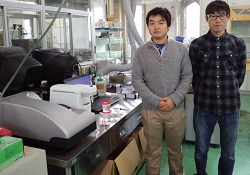A RESEARCH project which seeks alternatives to rare earths is the first application of Malvern Instruments’s latest particle characterisation instrument, the Zetasizer Nano ZSP.

Zetasizer Nano ZSP installed at Hiroshima University is the first of its ilk in the world
The laboratory of Dr Kikuo Okuyama at the department of chemical engineering at Hiroshima is conducting research into the composition and structure of functional fine particles in a bid to identify alternatives to rare earths and to develop new functional materials which do not exploit rare earths.
Although not especially rare, despite their name, rare earths are becoming strategically important minerals which play a critical part in many modern electronic devices. Many are sourced entirely or almost entirely from China, leading to some concerns about the reliability of supply and the potential for commodity prices to be controlled.
While some older rare earth mineral deposits may be re-opened and some elements can be recovered from waste and recycled electronics, an alternative approach is to identify materials which mimic the properties of rare earths or otherwise make the materials redundant.
Research at Hiroshima includes studies of the composition and structure of functional fine particles. and will use the new Zetasizer Nano ZSP in the evaluation of nano particle size, dispersion and surface chemistry.
“Size and zeta potential of particles will be measured and the data will be used to confirm the effect of changes in the chemistry of particles,” commented Dr Okuyama. “Our main objective is to find alternative materials for rare earths and to develop rare earth-free functional materials for use in applications such as high performance motors, white LEDs, batteries, and photocatalysts.”
The Zetasizer Nano ZSP is a single, compact unit which incorporates a two angle particle and molecular size analyser for enhanced aggregate detection and the measurement of small or dilute samples. A zeta potential analyser uses electrophoretic light scattering for particles, molecules and surfaces, and a molecular weight analyser uses static light scattering.
